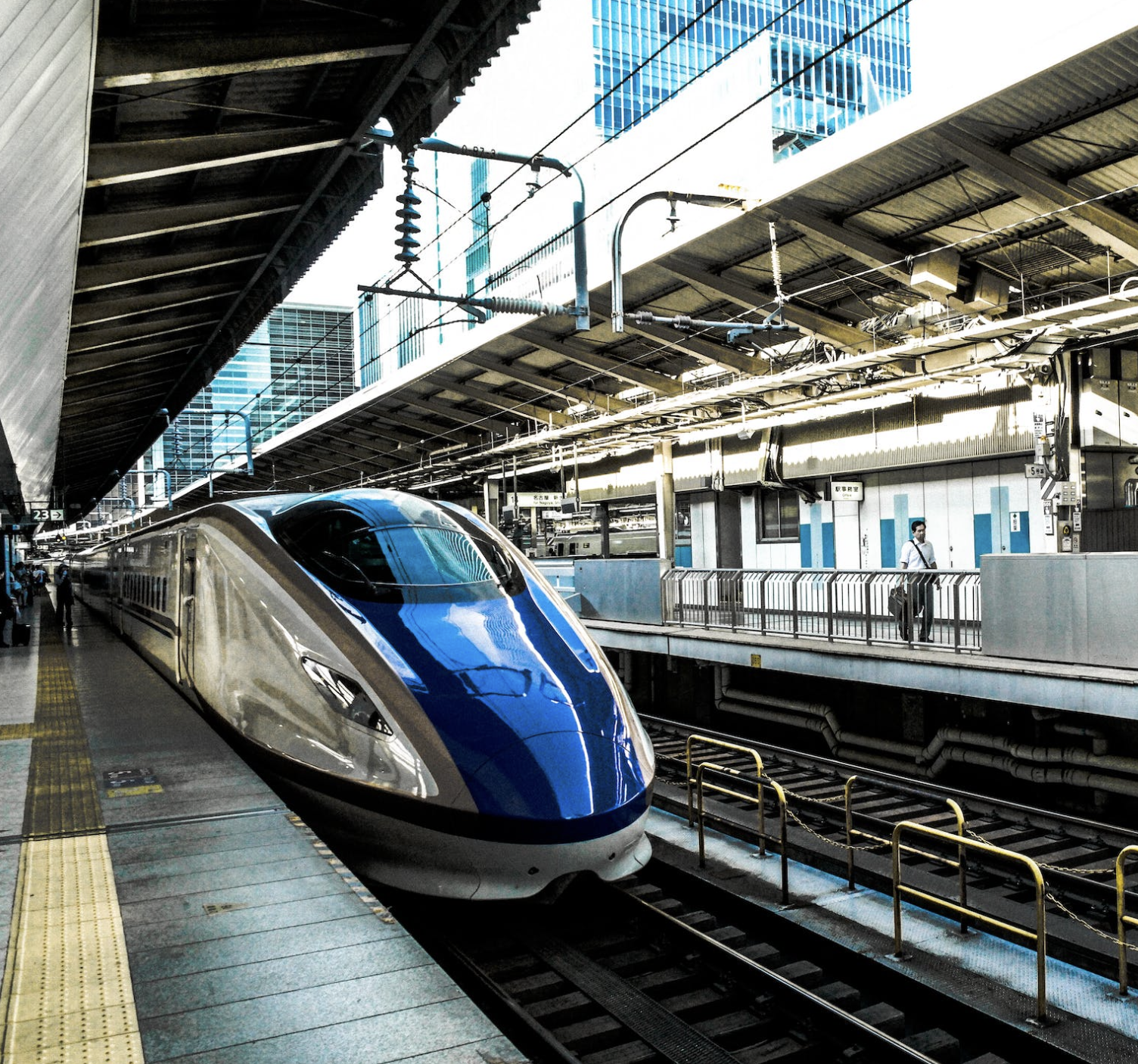Moving to Asia?
All you need to know
Moving to Asia?
All you need to know
After months of design and development, we are thrilled to announce the launch of The Maxxelli Portal. We bring you 15 years of Real Estate and Destination Services experience, all at your fingertips. Say goodbye to endless searches for documents or city guides buried in your inbox. Everything that defines the essence of Maxxelli is now beautifully curated in single location. Welcome to a new era of DSP convenience and exploration in China. The Maxxelli Portal (Youtube) In The Portal, we’ve streamlined the process into 5 straightforward sections. Our clients will receive real-time updates as they progress on their journey with us. - Overview - Home-Search - Lease Info - Tenancy Management - My City The My City section in The Maxxelli Portal shines as a standout feature. While the website offers regularly updated City Guides, the Maxxelli Portal showcases a comprehensive portfolio of guides for over 50 cities throughout China that delves much deeper than the general City Guides online. Within the For You section, we will also send timely articles that add value to the relocation process. [Screenshot from The Portal - Shanghai] For more information on the Maxxelli Portal, please reach out to our Managing Partner, Adam McWhirter a.mcwhirter@maxxelli-consulting.com
As an expat living in China, it's important to be aware of the various cultural traditions and holidays that are celebrated in the country. One such important holiday is Tomb Sweeping Day, also known as Qingming Festival, which is a time when Chinese people pay respects to their ancestors. Tomb Sweeping Day falls on April 4th or 5th each year, depending on the lunar calendar. This year, the holiday will take place on April 4th. In addition to the actual day, Chinese people often take a few days off to visit the graves of their ancestors, clean the gravesite, offer sacrifices, and pay tribute to their departed loved ones. The history of Tomb Sweeping Day dates back over 2,500 years to the Zhou Dynasty, when it was a day to honor the ancestors of the royal family. Over time, the tradition spread to the general population, and today it is observed by people of all backgrounds in China. One of the key customs of Tomb Sweeping Day is to burn incense and paper offerings at the gravesite as a way to show respect to the deceased. People also sweep the gravesite, remove weeds, and plant fresh flowers as a sign of honoring their ancestors. Additionally, some families will offer food and drinks as sacrifices to the spirits of their loved ones. For expats living in China, Tomb Sweeping Day can be a fascinating cultural experience to observe. You may come across people visiting cemeteries with fresh offerings, burning incense, and paying their respects to their ancestors. While you may not be able to participate in all the rituals, showing respect and understanding the significance of the holiday will be appreciated by your Chinese friends and colleagues. As Tomb Sweeping Day approaches, it's essential to be mindful of local customs and traditions and be respectful of those who are observing the holiday.
In an effort to promote sustainability and combat environmental issues, China has implemented a comprehensive recycling program. This program aims to reduce waste and encourage citizens to adopt more eco-friendly practices. In this article, we will break down the recycling program in through various cities and explain how residents can participate. Recycling programs and drop-offs do vary slightly across the different cities, but the general processes remain the same. Proper Sorting and Segregation: Proper sorting and segregation of recyclable materials is the first step towards effective recycling. Residents are encouraged to separate their waste into different categories, including paper, plastic, metal, glass, and hazardous waste. Collection Methods: The municipal governments have established various collection methods to ensure the smooth functioning of the recycling program: a. Community Recycling Stations: These are designated recycling areas within residential communities where residents can drop off their recyclable materials. b. Door-to-Door Collection: In certain neighborhoods, door-to-door collection services are provided. Residents can leave their recyclables outside their homes, and designated collection personnel will pick them up at scheduled times. c. Recycling Points: Recycling points are scattered throughout the city, usually near residential areas, shopping centers, or transportation hubs, where residents can drop off their recyclables. Recycling Bins and Labels: Many neighborhoods and public places are equipped with recycling bins to facilitate waste separation. The bins are color-coded, with different colors representing different types of recyclable materials. Additionally, bilingual labels are placed on the bins, providing clear instructions on what items are acceptable for each bin. Education and Awareness: To ensure the success of the recycling program, educating and raising awareness among residents is crucial. The municipal government regularly conducts awareness campaigns, workshops, and distributes informational materials to educate residents about the benefits of recycling and how to correctly participate in the program. Responsible Disposal of Hazardous Waste: Residents are advised to properly dispose of hazardous waste, such as batteries, electronics, and chemicals, through specialized collection points or by contacting relevant authorities. These materials should not be mixed with regular recyclables or disposed of in regular trash bins. Collaboration with Recycling Companies: Multiple recycling firms are used to collect, process, and reuse the recyclable materials efficiently. These companies receive the sorted recycling materials and transform them into new products through recycling, reducing the need for raw materials. By participating in the recycling program, residents contribute to the reduction of waste sent to landfills, conserve resources, and help protect the environment. It is essential for residents to familiarize themselves with the program's guidelines, understand the sorting and segregation procedures, and actively practice responsible waste management. China's overall recycling program is a significant step towards creating a more sustainable city. By encouraging residents to properly sort their waste and providing convenient collection methods, the program aims to make recycling a daily habit. If you are not certain of the recycling drop off locations in your compound or neighbourhood, be sure to reach out to your Maxxelli Consultant.
China's transportation landscape has witnessed a remarkable transformation in recent years, with ride-sharing apps playing a central role in changing how people get around cities. In this article, we will explore some of the most popular ride-sharing apps in China and guide you through the process of registering for them. 1. DiDi Chuxing DiDi Chuxing is the leading ride-hailing platform in China, with a massive user base and an extensive network covering both urban and suburban areas. The app offers various services, including DiDi Express, DiDi Premier, DiDi Luxe, and DiDi Luxe Electric. To register for DiDi, follow these steps: - Download the DiDi app from your device's app store. - Open the app and select your preferred language. - Create an account by providing your phone number or linking your existing social media accounts. - Enter the verification code sent to your phone number. - Set a password and complete the registration process. - You can now book rides on DiDi and enjoy the convenience of their services. 2. Meituan Dache Meituan Dache is another popular ride-sharing app in China, best known for its food delivery services but also provides convenient transportation options. Registering for Meituan Dache is straightforward: - Download the Meituan app from your app store. - Open the app and select your preferred language. - Sign up with your phone number or link your social media accounts. - Verify your phone number using the verification code. - Set a password and complete the registration process. - You are now ready to utilize Meituan Dache for your transportation needs. 3. Shouqi Yueche Shouqi Yueche, also known as "Shouqi Limousine & Chauffeur," is a premium ride-hailing service operating in major cities across China. It offers luxury vehicles, professional drivers, and a range of specialized services. To register for Shouqi Yueche: - Download the Shouqi app from your app store. - Open the app and choose your preferred language. - Sign up by entering your phone number or linking your social media accounts. - Verify your phone number with the verification code you receive. - Set a password and complete the registration process. - You can now access the premium services provided by Shouqi Yueche. 4. Gaode Dache Gaode Dache is another popular ride-sharing app in China that provides reliable transportation services. To register for Gaode Dache: - Download the Gaode Dache app from your device's app store. - Open the app and choose your preferred language. - Create an account by entering your phone number or linking your social media accounts. - Verify your phone number using the verification code. - Set a password and complete the registration process. - Start using Gaode Dache to book rides and enjoy the convenience it offers. Gaode Dache offers features such as real-time traffic information, estimated arrival times, and multiple payment options. It's a great alternative for getting around in China, so give it a try and experience seamless transportation services. It's worth noting that some ride-sharing apps may require linking a Chinese bank account for payment purposes. If you don't have one, you may need to explore alternative payment options like cash or online payment platforms such as Alipay or WeChat Pay. Ride-sharing apps like DiDi Chuxing, Meituan Dache, and Shouqi Yueche have revolutionized transportation in China, especially breaking down language barriers with maps and GPS. Registering for these apps is relatively straightforward and allows you to take advantage of the convenience and efficiency they bring to urban mobility. So, whether you're a resident or a traveler in China, consider embracing these ride-sharing apps to enhance your transportation experience.
China's recycling program has undergone significant development over the past two decades, transforming it into one of the most prominent and efficient recycling systems in the world. This transformation has been driven by increasing environmental awareness, government regulations, and advancements in technology. Let's delve into the key milestones and changes that have shaped China's recycling program. Phase 1: Early Stages (2000-2008) China's recycling program was initially limited in scope during the early 2000s. Small-scale informal recycling networks primarily operated, with individuals collecting and sorting recyclables to sell to scrap dealers. These activities were associated with ad hoc collection points where waste materials were stockpiled before being sold or exported. Phase 2: Development of National Recycling Policies (2008-2017) In 2008, China launched its first national waste management and recycling system. The government imposed regulations and standards to address environmental concerns and promote sustainability. One significant change was the establishment of packaging waste management, where manufacturers were required to take responsibility for the recovery and recycling of their product packaging. Another crucial development during this phase was the introduction of the "National Sword" policy in 2013, which aimed to address the importation of contaminated recyclables. China tightened restrictions on the quality of imported recyclables to protect its environment and human health. This initiative prompted countries around the world to improve their recycling processes and reduce contamination levels in exported materials. Phase 3: The Ban on Foreign Waste Imports (2017-2018) One of the most significant changes in China's recycling program occurred in 2017 when the country announced a ban on the import of 24 types of solid waste, including many recyclables. The ban, dubbed the "National Sword" policy, aimed to prioritize domestic recycling and reduce the environmental impact caused by the influx of contaminated recyclables. This ban caused a significant shift in the global recycling industry, as alternative destinations for discarded materials had to be identified. Many exporting countries, especially in North America and Europe, had to reevaluate their recycling infrastructure, improve domestic recycling capacity, and invest in new technologies to process the materials that were previously exported to China. Phase 4: Investment in Advanced Recycling Technologies The ban on foreign waste imports prompted China to shift towards more technology-driven recycling systems. The country invested in advanced recycling technologies, including artificial intelligence, machine learning, and robotics. These advancements enabled efficient sorting, recycling, and recovery of valuable materials from waste streams. China's recycling industry has also transitioned to favor specialized recycling facilities rather than small-scale informal operations. These advanced facilities employ sophisticated sorting equipment and methods to maximize the recovery of valuable resources from various waste streams, thus increasing recycling rates and reducing the environmental impact of waste disposal. Over the past two decades, China's recycling program has evolved significantly. From the initial informal recycling networks to the development of national recycling policies and the ban on foreign waste imports, China has shown a strong commitment to environmental sustainability. The focus on advanced recycling technologies has made the nation a global leader in recycling and resource recovery. While challenges remain, China's dedication to building a circular economy and reducing waste has become an inspiration for other countries to enhance their recycling infrastructure and practices.
WeChat, often referred to as China's super app, is a versatile mobile application that integrates social media, messaging, payment services, and much more into one convenient platform. If you're planning to visit or live in China, setting up a WeChat account is essential for staying connected and accessing a wide range of services. Many of the other large Chinese apps, you could maybe survive without, but for life in China - WeChat is everything. Step 1: Download and Install the WeChat App 1. Open your smartphone's app store (App Store for iOS or Google Play Store for Android). 2. Search for "WeChat" in the search bar. 3. Tap on the WeChat app from the search results. 4. Click "Download" or "Install" to begin the installation process. Step 2: Creating a WeChat Account 1. Open the WeChat app on your smartphone. 2. Select your preferred language (English is available) to navigate more comfortably. 3. Tap on "Sign Up." 4. Choose your region or country and input your mobile phone number. 5. Verify your phone number by entering the verification code sent to your device. 6. Create a unique and secure WeChat ID (nickname). 7. Set up a password for your WeChat account. 8. Fill in your personal information, including your name and any other required details. Step 3: Setting up Your Profile 1. Upload a profile photo by tapping on your blank profile picture. 2. Personalize your WeChat profile by adding a cover photo and a brief introduction. 3. Add contacts by syncing your phone contacts with the WeChat app or manually entering WeChat IDs or phone numbers. 4. Explore the different sections of WeChat, such as Moments (similar to a social media feed), Chats (individual and group conversations), and Discover (various features and services). Step 4: Linking Your Bank Card 1. To enable WeChat Pay, which allows you to make digital payments within the app, you need to link your bank card. 2. In the "Me" section, tap on "Wallet" or "My Bank Cards" to access the WeChat Pay settings. 3. Select "Add a Card" and enter your bank card details, including the card number, expiry date, and CVV code. 4. Follow the on-screen instructions to complete the card verification process. 5. Once verified, your bank card will be successfully linked to your WeChat account. A common challenge is your name. It needs to be written exactly as it is at the bank, which sometimes creates confusion depending how the bank typed your name into their system. - LAST NAME first name middle names - LASTNAMEFIRSTNAMEMIDDLENAMES - last name first name middle names - first name middle names LAST NAME This is not an issue for Chinese Characters, but does create confusion with the alphabet. Step 5: Exploring WeChat Features 1. Use WeChat for messaging by tapping on the "Chats" section and selecting a contact to chat with. You can send text messages, voice messages, photos, videos, and more. 2. Discover more features and services within the WeChat app, such as WeChat Pay for mobile payments, Mini Programs for accessing various applications, Official Accounts for following brands and influencers, and WeChat Moments for sharing your updates with friends. 3. Participate in WeChat groups to connect with like-minded individuals, join communities, or stay informed about events and activities happening around you. Registering for a WeChat account is a must-do when entering China's digital landscape. Stay connected, make payments, share moments, and enjoy the convenience of WeChat as your go-to super app in China. Get started and embrace the next level of mobile functionality with WeChat!
Alipay, owned by Ant Group, is a popular digital payment platform in China that allows users to make secure and convenient mobile payments. Whether you're an expat living in China or planning to visit, setting up Alipay is essential for seamless shopping, dining experiences, and even transportation services. In this guide, we'll walk you through the process of setting up Alipay, step-by-step. As always, for Maxxelli Clients, we will work with you to set this up following the bank account establishment. Step 1: Download and Install the Alipay App 1. Open your smartphone's app store (App Store for iOS or Google Play Store for Android). 2. Search for "Alipay" in the search bar. 3. Tap on the Alipay app from the search results. 4. Click "Download" or "Install" to begin the installation process. Step 2: Creating an Alipay Account 1. Open the Alipay app on your smartphone. 2. Select your preferred language (English is available) to navigate more comfortably. 3. Tap on "Sign Up" or "Register" to create a new account. 4. Choose your region or country and input your mobile phone number. 5. Verify your phone number by entering the verification code sent to your device. 6. Create a secure password for your Alipay account. 7. Fill in your personal information, including full name, email address, and any other required details. 8. Set up a security verification method (e.g., facial recognition, fingerprint, or PIN) to protect your account. Step 3: Linking Your Bank Card 1. Open the Alipay app and go to the "Me" section (usually located at the bottom right corner). 2. Select the "Bank Cards" option within the personal profile settings. 3. Tap on "+ Add Card" and select your bank's name from the list. 4. Enter your bank card number, its expiration date, and the CVV code (3-digit code typically found on the back of your card). 5. Click "Next" and follow the on-screen instructions to complete the card verification process. 6. Once verified, your bank card will be successfully linked to your Alipay account. A common challenge is your name. It needs to be written exactly as it is at the bank, which sometimes creates confusion depending how the bank typed your name into their system. - LAST NAME first name middle names - LASTNAMEFIRSTNAMEMIDDLENAMES - last name first name middle names - first name middle names LAST NAME This is not an issue for Chinese Characters, but does create confusion with the alphabet. Step 4: Setting up Alipay Money and Services 1. From the "Me" section, tap on "Balance" or "Finance" to find the equivalent of a digital wallet in Alipay. 2. To add money to your Alipay account, click on "Top Up" or "Add Funds." 3. Choose your preferred method of adding money (e.g., bank transfer). Follow the instructions given, and the funds will be deposited into your Alipay Balance. 4. Explore other Alipay features such as utility bill payments, mobile phone top-ups, or managing investments. Step 5: Exploring Alipay Features - Use Alipay for mobile payments by scanning QR codes at participating merchants' or service providers' locations. - Discover and take advantage of promotions, discounts, and cashback offers available within the Alipay app. - Explore additional features, such as transfer money to other Alipay users locally or internationally (e.g., through the "Transfer to Friends" feature). - Customize your Alipay app settings based on your preferences (e.g., receipt notifications, privacy settings). Setting up Alipay is a crucial step for anyone living or visiting China. With Alipay, you can seamlessly make mobile payments, access a wide range of services, and unlock exclusive deals. Get started and embrace the future of digital transactions with Alipay today!
As an expat living in China, you may find yourself with second-hand furniture you no longer need or wish to sell as you are getting ready to repatriate. Fortunately, there are several avenues available for selling used furniture. In this article, we will guide you through the process of selling second-hand furniture in China, including both offline and online options. Assessing the Furniture's Condition: Before listing your furniture for sale, carefully evaluate its condition. Take note of any damages, wear, or cosmetic flaws as these factors will affect potential buyers' interest and the asking price. Offline Options: a. Local Classifieds: - Look for newspapers, community corkboards, or expat-specific classifieds in your city that allow you to post advertisements for selling furniture. - Take clear pictures of your furniture, along with a detailed description and your contact information, and post your ad in these local outlets. b. Utilize Social Media: - Join expat or local community groups on popular social media platforms such as WeChat, Facebook, or LinkedIn. - Seek out specific groups dedicated to expat living, where you can post your furniture listings along with photos, prices, and contact details. - Don't forget to mention any unique selling points or features to attract potential buyers. c. Furniture Swaps: - Check if there are any local flea markets or community events where you can set up a booth to sell your furniture. This is often prior to the summer breaks and organized by expat community groups or in and around the international schools. - Organize your own Furniture Swap in your community. Again, during the pre-summer transition, there will be many people looking to sell lightly used furniture and those looking to take advantage of potential deals. Online Options: a. E-commerce Platforms: - Explore popular local e-commerce platforms such as Taobao, Tmall, or JD.com. These platforms offer comprehensive options for selling not only new but also second-hand items. 闲鱼Xian You is another app that has become very popular in recent years for both buyers and sellers. - Create a seller account, upload attractive photos of your furniture, write a compelling description, and set reasonable prices. - Consider hiring a friend with Chinese language proficiency or using translation tools to navigate the Chinese platforms effectively. b. Expat-oriented Online Forums: - Join expat forums like eChinacities, Internations, or ExpatWoman. They have dedicated sections for selling and buying second-hand items. - Each city will also have numerous Furniture Sales groups within WeChat. You'll need to ask around to get invited. - Besides groups, you can also sell furniture on your WeChat Moments. You never know which contact is looking for a bargain. Price Setting and Negotiations: a. Research Local Market Prices: - Check online platforms or visit local furniture stores similar to yours to determine the average market value of your furniture. - Set the asking price slightly higher to allow room for negotiations. b. Be Open to Reasonable Offers: - Pricing your furniture slightly higher accounts for negotiation. Be prepared to consider reasonable offers without undermining your profitability. As your departure date nears, you may need to lower your expectations to simple move the furniture. With some research, thoughtful pricing, and effective communication, you can successfully sell your second-hand furniture. It's amazing how much you collect in just a short time in China. Rather than trashing old furniture, the 2nd hand sales avenue allows you to recoup some of your investment and give the furniture a 2nd home.
Traveling by high-speed train in China is not only convenient but also offers the opportunity to explore the country's vast and diverse landscapes. As an expat living in China, understanding the process of booking high-speed train tickets becomes essential. In this article, we will provide you with helpful tips and information to navigate China's high-speed train ticket booking system seamlessly. Researching Your Route and Schedule: Before booking your high-speed train tickets, it is crucial to know your desired route and travel dates. China has an extensive network of high-speed train routes connecting major cities. Expats can benefit from using reliable online resources like China Railway's official website, relevant mobile applications, or trusted travel agencies to check train schedules, ticket availability, and fares. Booking Train Tickets Online: Booking high-speed train tickets online is the most convenient option. China Railway's official website (www.12306.cn) provides an English version, making it user-friendly for expats. However, the registration process on the website might require a Chinese phone number, making it advisable to seek assistance from Chinese friends or use third-party ticketing platforms if you do not have a phone number. Third-Party Ticketing Platforms: Several third-party ticketing platforms, such as Trip.com (formerly known as Ctrip) and Qunar, offer easy and reliable ways to book train tickets in China. These platforms often provide English language support and accept international credit cards, saving expats from the hassle of registration difficulties. These websites also offer user-friendly interfaces and allow you to choose your preferred seating class. Ticket Collection Methods: In recent years, foreign passport holders were required to obtain a paper ticket even if they booked online. This meant a trip to the ticket offices throughout the city or at the train station, which unfortunately lead to waiting in never-ending lines. Now, as a foreign passport holder, you care use scan your passport. When you enter the station, they will do a manual check of your passport, so look for the line with a police officer sitting at a small booth. Once you are in the train station, you are able to scan your passport. Look for the corresponding lane number matching your train number. When you get to the front of the line, your passport is scanned and you can head down to the platform. Train Seating Classes: China's high-speed trains offer different seating classes to cater to travelers' preferences and budgets. The commonly available classes are: - Second Class (Second Seating): The most economical choice, comfortable for short to medium-distance journeys. Typically a 2 x 3 seat configuration. - First Class (First Seating): More spacious seats and upgraded amenities, recommended for longer trips or if you prefer extra comfort. A 2 x 2 seat configuration. - Business Class: A premium option with wider seats and better amenities, suitable for those seeking superior comfort and privacy. Pod style seating. Important Considerations: - Booking in Advance: High-speed train tickets in China tend to sell out quickly, especially during peak travel seasons. Booking in advance is advisable to secure your preferred train, departure, and seating class. - Valid Identification: When traveling on Chinese trains, all passengers must carry valid identification, typically their passport. Make sure to keep your identification handy throughout the journey, as it may be verified by train staff during ticket checks. - Flexibility in Travel Dates: If your travel dates are flexible, you can save money by considering less crowded days, such as weekdays or non-public holidays, as ticket prices may vary. - Train Station Navigation: Large train stations in China can be vast and busy. To make your journey comfortable, allow sufficient time for navigation, security checks, and finding your platform or waiting area. One of the true success stories in China has been development of the high-speed rail network. Think about this - via high-speed rail, within around 5 hours from Wuhan, you have access to nearly a billon people (Beijing, Shanghai, Hong Kong, Chongqing and everything in between). Incredible!! By understanding the process of booking high-speed train tickets in China, expats can comfortably explore this fascinating country and conveniently travel between its cities. While in China, done't hesitate take advantage of the high-speed rail network and explore this wonderful country.









